Chitrashala Press
Chitrashala Press produced some charming children's pictorial alphabet cards for early learning purposes in the 1940s.
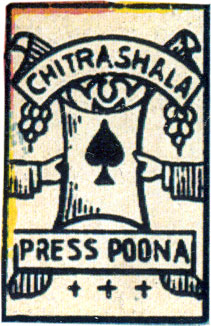
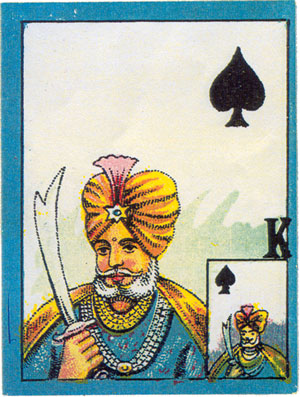
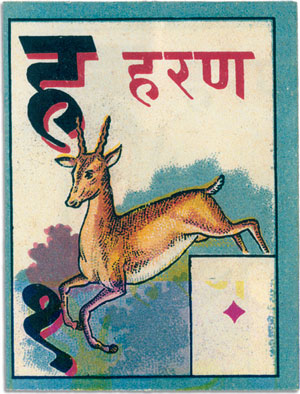
Chitrashala Press, Poona, India
The Chitrashala Press of Pune (formerly Poona) was located in West Central India in today’s Maharashtra state where the Marathi language is spoken. Chitrashala Press endeavoured to print traditional Indian cards (Dasavatara Ganjifa) in the same style as hand-painted Indian cards. They also produced some charming children’s pictorial alphabet cards for early learning purposes.
The Children’s Alphabetical Packs, c.1940
At least three different editions of the cards were published; two with Marathi text and a third edition in Urdu. The cards were obviously intended as a game for fun but also with an educational agenda, i.e. the teaching of reading, matching and etiquette.
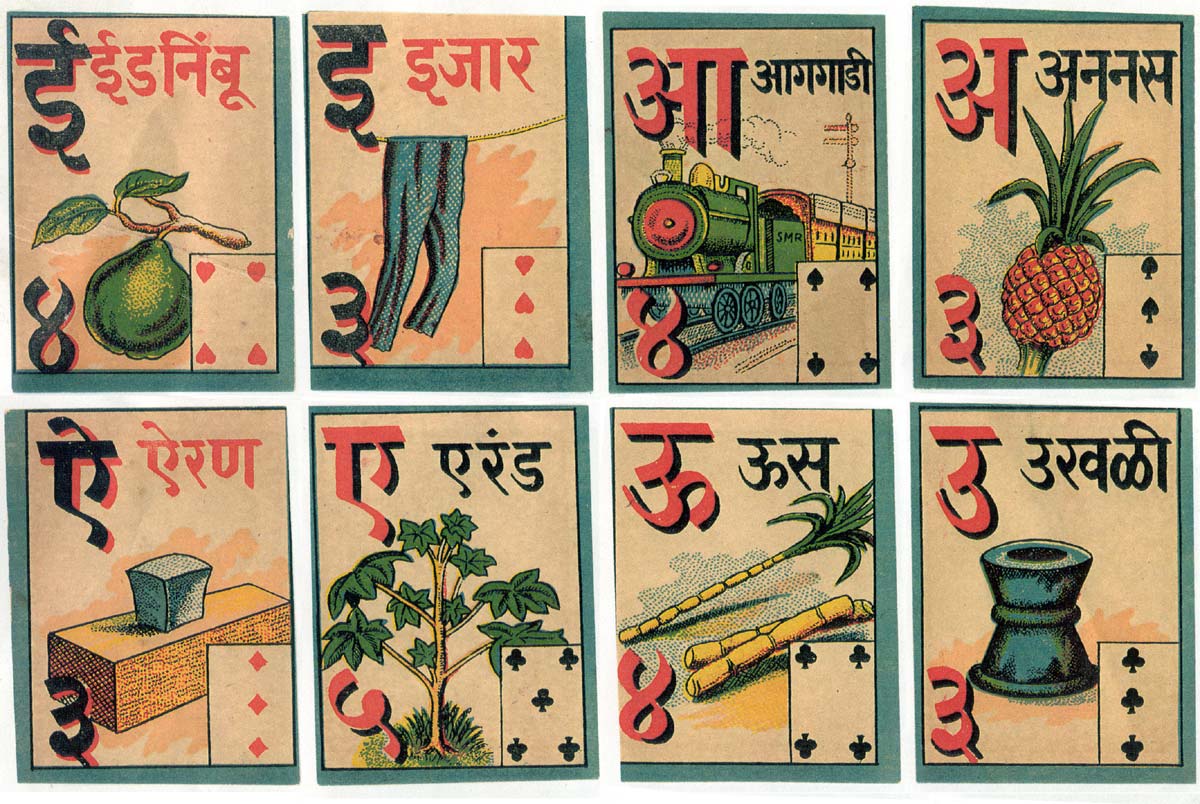
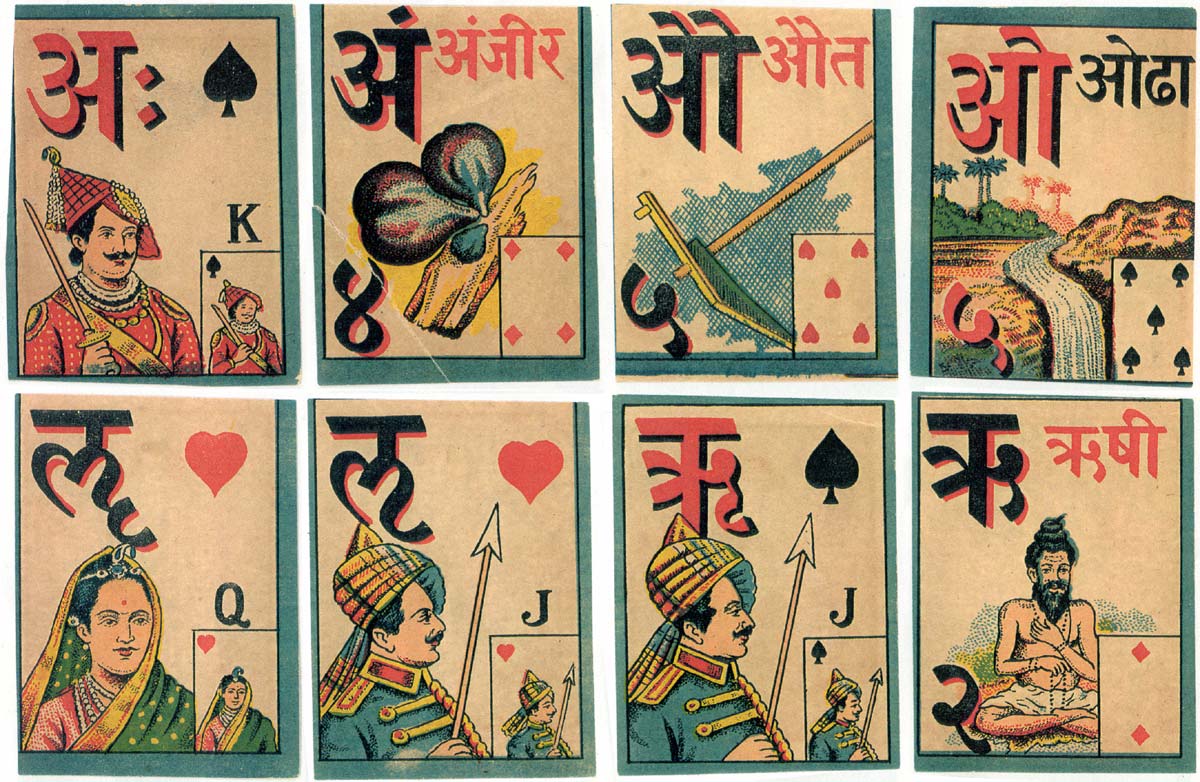
Above: cards from the first edition of picture playing cards for children, published by Chitrashala Press, Pune, India, c.1940. The images on the numeral cards show everyday objects such as ships, trains, rivers, a holy man or yogi, fruit, animals and a fire altar. The Kings and Queens are Maharajas and Maharanis and the Jacks are princes.
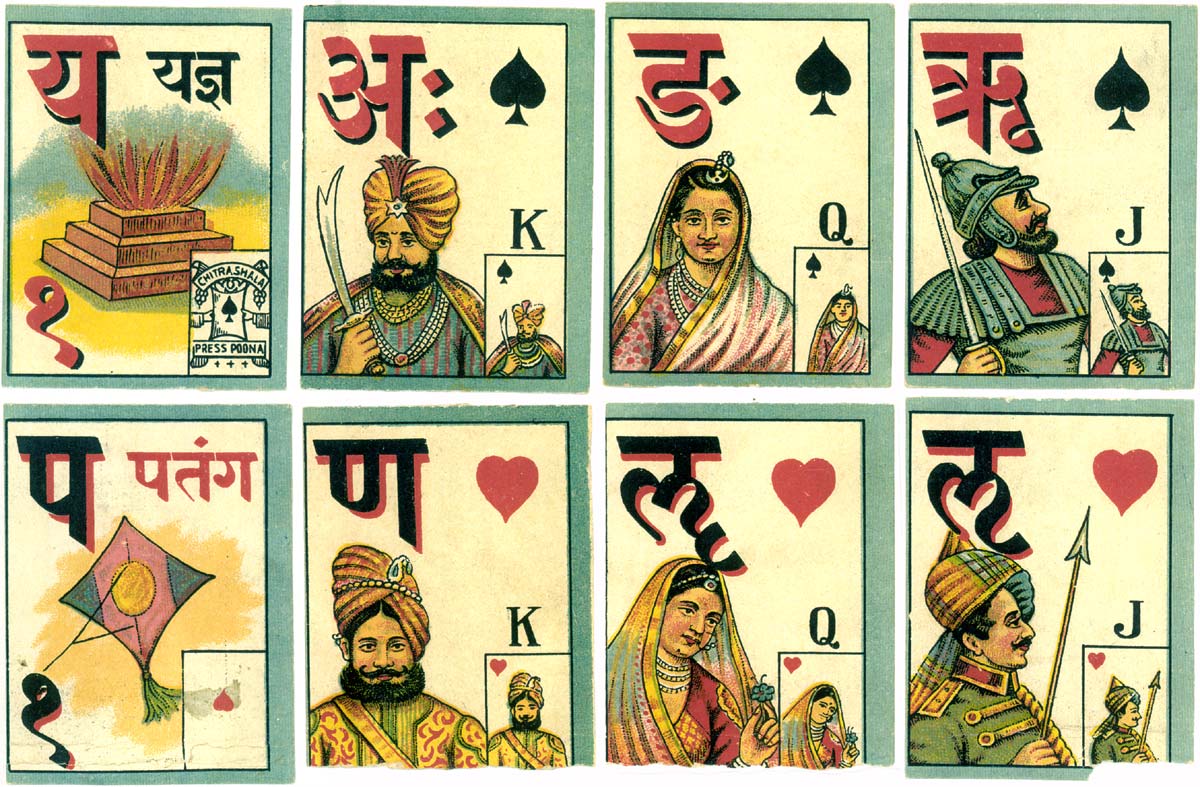
Above: second edition of picture playing cards for children, virtually identical to the first edition but with new illustrations for the court cards, published by Chitrashala Press, Pune, India, c.1940. The Kings and Queens show a Maharaja and Maharani, and the Jacks are princes. The Roman letters K, Q and J are used to denote the ranks of the court cards. There are no Arabic number indices, but the values of the numeral cards are shown in the bottom left-hand corners. At the top of the cards are the first letter of the words written in Marathi, in the opposite colour to that of the suit sign.
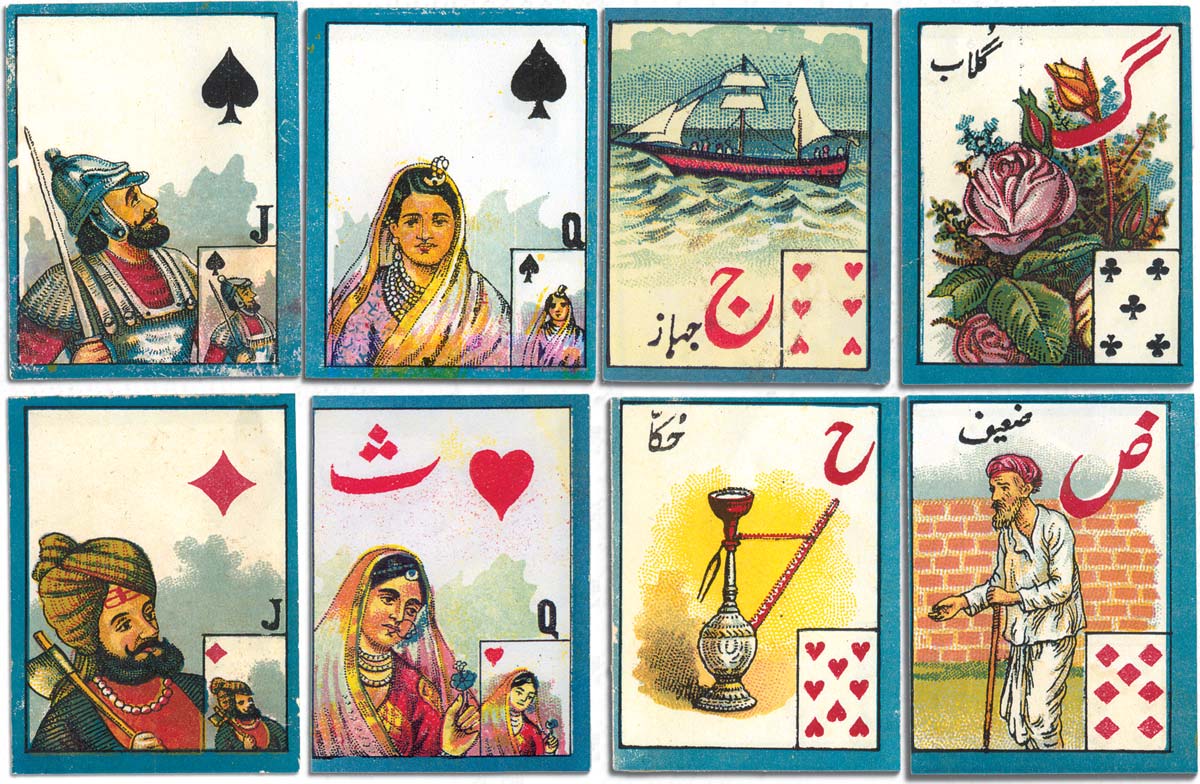
Above: cards from the Urdu edition of picture playing cards for children, published by Chitrashala Press, Pune, India, c.1940. This edition shares the same educational objectives as the Marathi packs but depicts characteristics of Muslim culture such as a mosque, etc. The court cards share the same images as the second Marathi edition.
Educational or Instructional playing cards have been around since the 16th century. See also: Logica Memorativa by Thomas Murner, 1507 • Robert Morden's Map Cards, 1676 • Arms of English Peers, 1686 • Proverbial Cards, 1698 • Mechanical Instruments, c.1700 • Geistliche Karten, 1718 • Cartes Questions-Devinettes, c.1840 • Happy Families • Jaques' Illustrated Proverbs, c.1885 • Spanish Instructional Cards, 1888 • Japanese Uta Garuta • Children's Maxim Cards from Uruguay • Change for a Shilling, c.1930 • Snip Snap, 1968 • Learn Thai Playing Cards, 2009
REFERENCES
Gordhandas, Kishor: Playing-Cards of the Chitrashala Press - part 1, in 'The Playing-Card', Journal of the International Playing-Card Society, vol.30, no.3, Nov/Dec 2001, pp.132-138.
See also: Dasavatara Ganjifa►
By Simon Wintle
Spain • Member since February 01, 1996 • Contact
I am the founder of The World of Playing Cards (est. 1996), a website dedicated to the history, artistry and cultural significance of playing cards and tarot. Over the years I have researched various areas of the subject, acquired and traded collections and contributed as a committee member of the IPCS and graphics editor of The Playing-Card journal. Having lived in Chile, England, Wales, and now Spain, these experiences have shaped my work and passion for playing cards. Amongst my achievements is producing a limited-edition replica of a 17th-century English pack using woodblocks and stencils—a labour of love. Today, the World of Playing Cards is a global collaborative project, with my son Adam serving as the technical driving force behind its development. His innovative efforts have helped shape the site into the thriving hub it is today. You are warmly invited to become a contributor and share your enthusiasm.

Leave a Reply
Your Name
Just nowRelated Articles

Verkeers Kwartet
A helpful quartet game celebrating the 75th anniversary of road safety exams making traffic safer.
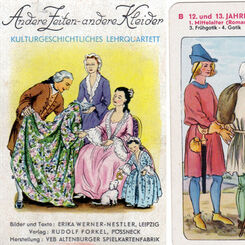
Andere Zeiten - Andere Kleider
‘History of fashion’ cultural quartet game designed by Erika Werner-Nestler, 1954.
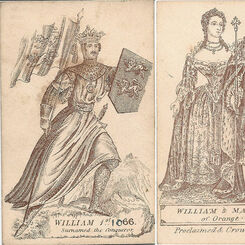
The Royal Historical Game of Cards
The Royal Historical Game of Cards invented by Jane Roberts and published by Robert Hardwicke, c.184...
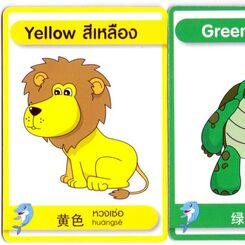
Children’s Vocabulary Cards
Thai Children’s Colour Vocabulary Cards promoting Ovaltine chocolate malt drink, 2016.
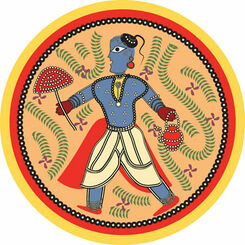
Guru Ganjifa
Sunish Chabba is working on an initiative to revive traditional Ganjifa, the card game most popular ...
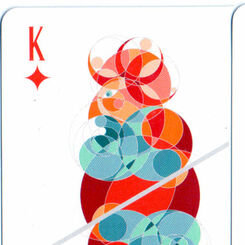
Math Stack
“Math Stack” playing cards designed by Diana Stanciulescu, illustrating and explaining 36 important ...
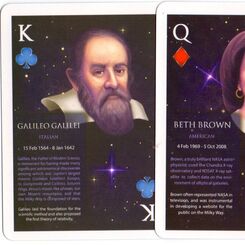
Star Stack
Star Stack playing cards feature illustrations of famous astronomers and important astronomical cons...
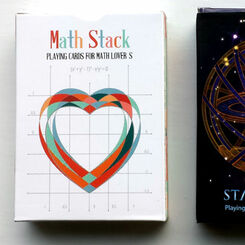
EduStack — Playing Cards for Math & Astronomy
EduStack is a team from India passionate about gaming and education that has created two sets of cus...
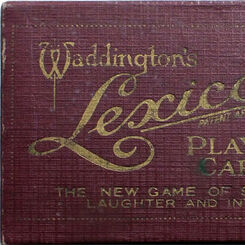
Lexicon
The summer of 1932 saw the introduction of Lexicon, when a small edition was produced and sold to te...

World Tour
World Tour Quiz Game published by Tactic Group for Finnair involves recognising flags from different...

Lingo Pix
Lingo Pix Tourist Picture Cards by TM Cards, India, 2006
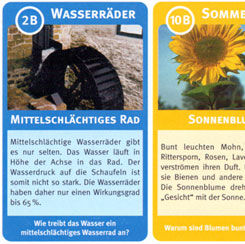
Klipp Klapp Karten
“Klipp Klapp Karten” printed by KZWP-Trefl (Poland) for Kindermuseum Oelde (Germany) in 2004

Indian Ganjifa Playing Cards
‘Ganjifa’ playing cards made in Sheopor in the North of Madhya Pradesh province in Central India. Th...
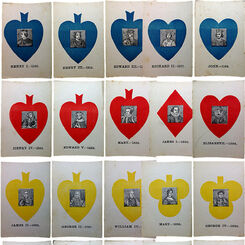
Quits
Jaques' Quits card game, c.1880-85, with portraits of monarchs inside suit symbols in red, blue and ...
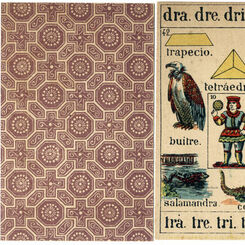
Jaime Margarit - Recreo Infantil
'Recreo Infantil' children's educational cards published by Jaime Margarit, Palamós (Gerona) c.1888....
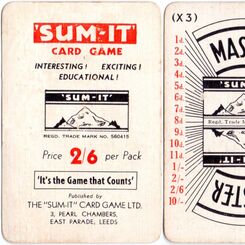
Sum-it Card Game
‘Sum-it’ Card Game published by Sum-It Card Games Ltd. c.1935.

Children's Card Games
Children's games are distinct from ordinary playing cards, the most obvious difference being the lac...
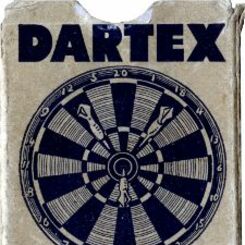
Dartex
Dartex, the Thrilling New Card Game of Skill (1938) based on the traditional pub game where darts ar...
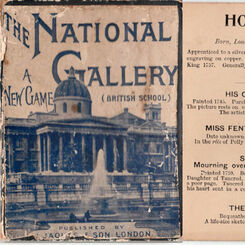
National Gallery (British School)
Jaques' The National Gallery Card Game, c.1895.
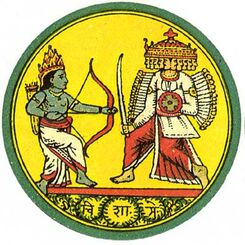
Dasavatara Ganjifa from India
Chromo-lithograph Ganjifa cards by the Chitrasala Press, around 1950. Ten suits of twelve cards, eac...
Most Popular
Our top articles from the past 60 days


 Your comment here. Your comment here. Your comment here. Your comment here. Your comment here. Your comment here. Your comment here. Your comment here. Your comment here. Your comment here. Your comment here. Your comment here. Your comment here. Your comment here. Your comment here. Your comment here. Your comment here. Your comment here. Your comment here. Your comment here. Your comment here. Your comment here. Your comment here. Your comment here. Your comment here. Your comment here. Your comment here. Your comment here. Your comment here. Your comment here. Your comment here. Your comment here.
Your comment here. Your comment here. Your comment here. Your comment here. Your comment here. Your comment here. Your comment here. Your comment here. Your comment here. Your comment here. Your comment here. Your comment here. Your comment here. Your comment here. Your comment here. Your comment here. Your comment here. Your comment here. Your comment here. Your comment here. Your comment here. Your comment here. Your comment here. Your comment here. Your comment here. Your comment here. Your comment here. Your comment here. Your comment here. Your comment here. Your comment here. Your comment here.




















